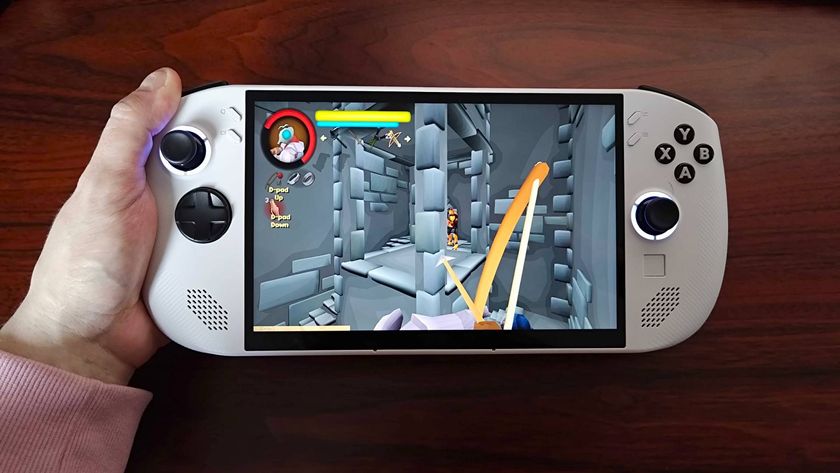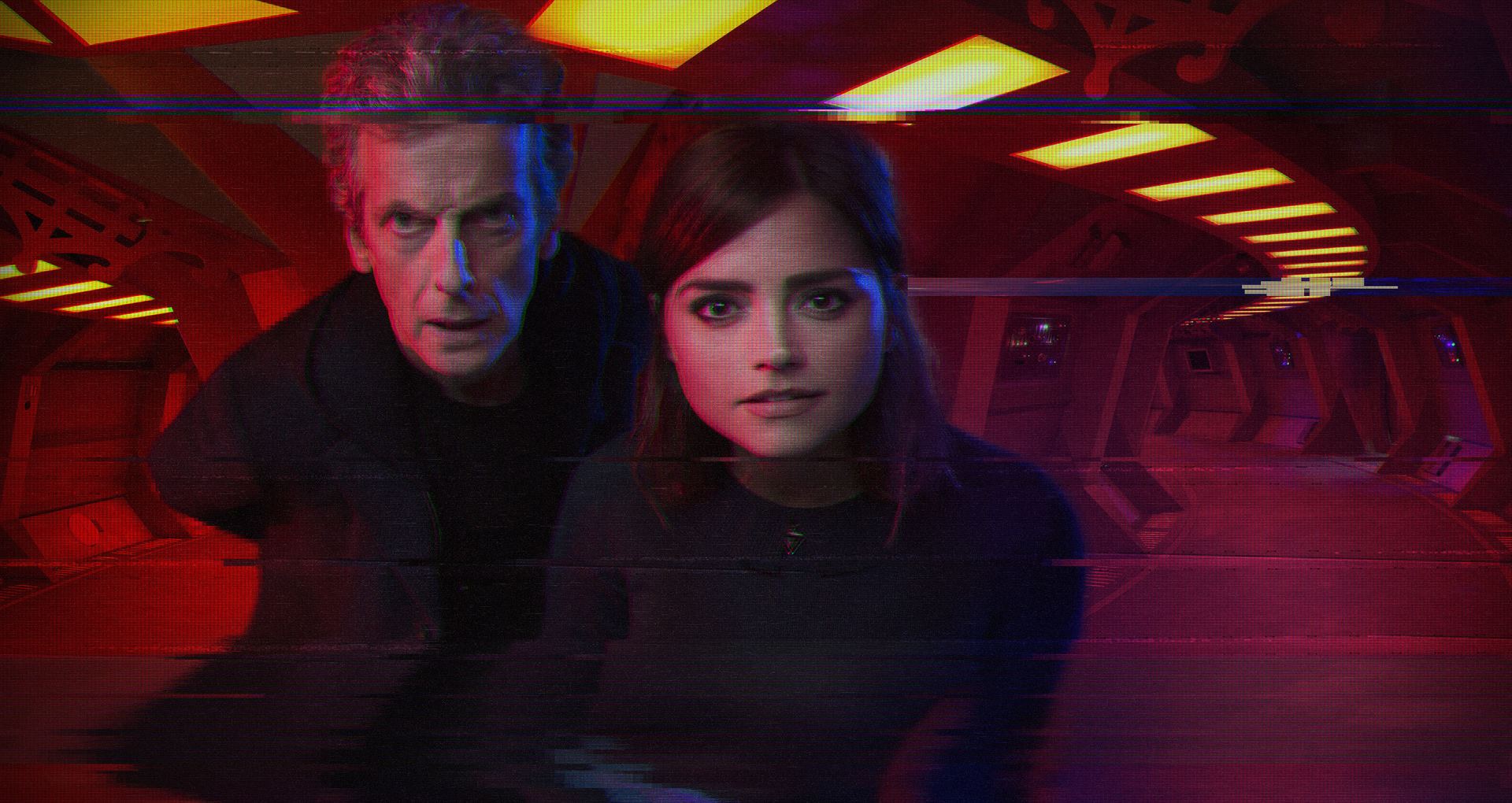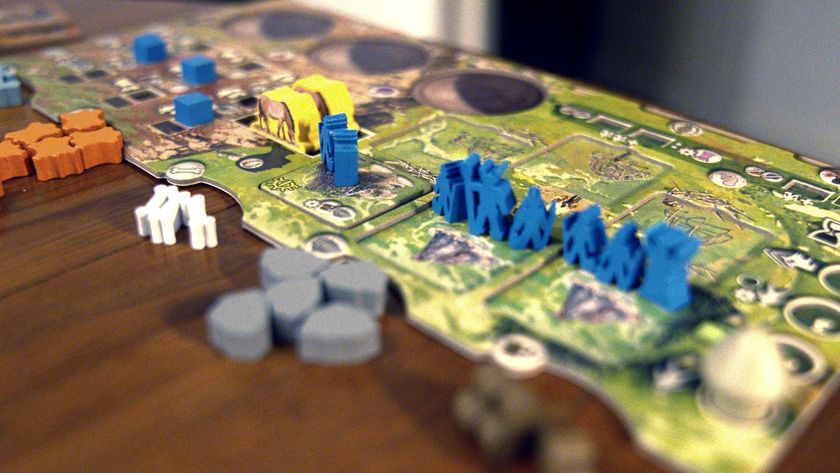Why you can trust 12DOVE
There are plenty of firsts in “Sleep No More”. It’s the first found footage episode of Doctor Who, the first not to feature the show’s famous title sequence and the first standalone episode of series nine. It’s also the first episode this series that fails to hit the mark, despite evidently lofty ambitions and some creepy new creatures.
What “Sleep No More” certainly isn’t, however, is Doctor Who’s first base-under-siege story. It isn’t even the first base-under-siege story this series. The claustrophobic space station setting provides a welcome change of pace after the globetrotting Zygon two-parter and couldn’t be more different from Mark Gatiss’s series eight offering “Robot Of Sherwood”. It’s straightforward fare as far as Who siege stories go – lots of running through corridors, plenty of barricading doors and slowly encroaching creatures at every turn. The episode is given an extra wrinkle by its presentation, but the found footage proves as problematic as it does innovative.
Director Justin Molotnikov (who helmed many an episode of Merlin) has a decent stab at mimicking the shaky cam format on a no-doubt-tight budget and crafts the odd effective scare out of the chaos. Having the Doctor continually address the camera in a manner that flirts with the fourth wall is quite startling but hypnotically intimate, while it’s neat that the found footage also serves a narrative purpose – rather than GoPros and CCTV it’s the sleep dust in the corner of the characters’ eyes or floating in the air that we’re viewing the action from. Most will have twigged something was amiss the moment the action cut to Clara’s perspective, long before Nagata’s clumsy revelation that the soldiers aren't packing helmet cams.
But the experimental format comes at the expense of clarity, with the murky lighting and erratic shifts in point of view making the action a struggle to follow. It doesn’t stick to its own rules either, abandoning the desaturated CCTV effect of the “eye in the sky” footage on a whim, while the camera is frequently placed in improbable positions even for the dust – inside the Tardis as it dematerialises, for example. It lacks the necessary rigour that makes The Blair Witch Project and its ilk so effective.


The Le Verrier space station is named after French mathematician Urbain Le Verrier, who predicted the existence and position of Neptune using maths alone in 1846. And you thought putting a tax return together was hard.
The Sandmen, however, are fab – those gaping mouths the stuff of nightmares, with their exceptional sound design complementing the creaks and groans of the Le Verrier (top marks to Murray Gold for his subtle scoring too, even if “Mr Sandman” is a viciously annoying earworm). The Sandmen also fit neatly into a long-standing Doctor Who tradition by transforming the ordinary into something unsettling or downright scary – in this case making sleep a safeguard against the monsters inside. At one point the Doctor shamelessly addresses the camera to hammer home the fact that if you don’t go to bed you’ll be in trouble – a helpful new bogeyman for parents with children who refuse to go to sleep at night.
After last week’s magnificent monologuing and Zygon doppelgangers Peter Capaldi and Jenna Coleman settle back into a comfortable groove here. Gatiss gifts the pair some solid gold dialogue but it’s the kind of material they could deliver in their sleep at this stage. The troops fail to make much of an impression, only Nagata is fleshed out beyond “blindingly obvious Redshirt” (amusingly each character is given a “survival rating” at the start of the episode). Gatiss’ League Of Gentlemen co-creator Reece Shearsmith has a bit more fun with mad scientist Rassmussen, driven insane by his own abominable creation, but it’s exactly the kind of disingenuous and skin-crawlingly creepy character you’d expect Shearsmith to play, which makes his turn to the dark side wearingly predictable.
“Sleep No More” isn’t boring or offensively bad, it’s just a little underwhelming and the risky found footage format never quite gels. It’s not the first time a Doctor Who story has failed to realise it potential, but we can’t fault it for trying.
The Name Game
“It’s like the Silurians all over again” is a reference to the Silurian naming debacle that saw them labelled Silurians by Dr Quinn in “Doctor Who And The Silurians” despite the fact reptilian life forms didn’t exist in the Silurian period. In “The Sea Devils” the Doctor claims they should be called “Eocenes”, but clearly that didn't stick.
Doctor Who airs on Saturday evenings on BBC One in the UK and BBC America in the US.
For more on top sci-fi TV shows like Doctor Who, subscribe to SFX.
| Writer | Mark Gatiss |
|---|---|
| Director | Justin Molotnikov |
| The One Where | The Doctor and Clara find themselves aboard the Le Verrier in the 38th Century (on a Tuesday), where a machine which compresses a nights sleep into five minutes has created monsters made out of the goop in the corner of your eye. |

I'm the Deputy Editor at Total Film magazine, overseeing the features section of every issue where you can read exclusive, in-depth interviews and see first-look images from the biggest films. I was previously the News Editor at sci-fi, fantasy and horror movie bible SFX. You'll find my name on news, reviews, and features covering every type of movie, from the latest French arthouse release to the biggest Hollywood blockbuster. My work has also featured in Official PlayStation Magazine and Edge.

















